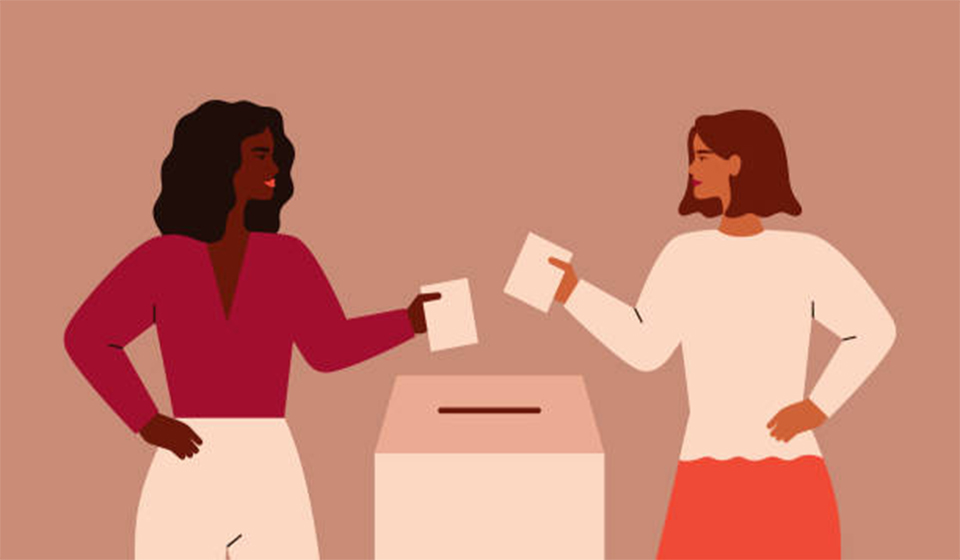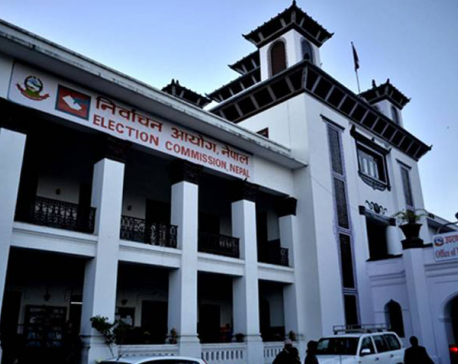
OR
Opinion
FPTP Election: A Road Less Traveled by Women
Published On: December 15, 2022 09:00 AM NPT By: Neelam Dhanuse


Neelam Dhanuse
The author is rights activist working for gender equality and social inclusion in Nepal for nearly the past two decades.news@myrepublica.com
Providing equal opportunity to women in elections is crucial to believe in women’s capacity and change stereotypes in politics.
According to the final results of the November 20 elections announced by the Election Commission (EC), only nine women have been elected to the 165 seats of the House of Representatives under the first past the post (FPTP) election system and just 14 out of 330 provincial assembly members. As gender issues and women’s political participation take center stage in the global arena, political parties appeared at the bottom of the ladder on offering candidacy to women that discouraged many creditable women leaders from contesting in the First Past-the-Post Election. The number of women’s nominations is noticeably inadequate when equated to the men’s nomination which directly led to the election of fewer women.
Under the FPTP election, only nine percent of women candidates are at the federal level, and even falling short with 8 percent in the provincial level election. The sluggish progress in the nomination of women is observed in elections - 5.5 percent women candidates in the first parliamentary elections under the new Constitution (2015 BS) to nine percent in the latest election (2079 BS) at the federal level.
The statistics suggest that the major political parties fielded nominal women candidates in the federal parliament election; the Nepali Congress fielded six percent women candidates, Rastriya Prajatantra Party six percent , CPN-UML eight percent, Rastriya Swatantra Party six percent, and the CPN (Unified Socialist) five percent. The CPN (Unity Centre) seemed progressive with 21 percent women candidates.
To uncover the major hinderers behind the low number of women candidates and their win in the direct elections, we need to discuss further. Some of the major hindrances in selecting limited women candidates by the parties are as follows:
Party gatekeepers
Becoming a candidate in a particular constituency of any party is critical to win an election. To get a party nomination generally requires participation in a process that is controlled by the political party’s powerful leaders who are usually men in the Nepali context. The gatekeepers can inspire or discourage women to attend, and they can speak in favor of or against specific possible candidates, which is crucial for candidate selection. The perception of gatekeepers that politics and leadership are men’s forte, mostly demoralizes women to take part in the direct election. The connection of women with party gatekeepers seems weak, hindering their candidacy.
Big men are above policy
Most parties have comprehensive policies and commitments to promote women and people from the marginalized communities to leadership positions. But the big men in the party have a huge influence on the nominations. Big men misuse the legal gap about representation of women for their interest. The relationship between big men and politicians determines their chances of being nominated in an election. A big man or an alliance of big men on the nomination committee determines the candidacy, and women are less likely to be accessible to these alliances.
Money matters
Limited resources are a strong cause of less candidacy and victory of women in the FPTP elections. Women have limited access to and control over financial resources and its mobilization, which hinders their ability to spend and fundraise for election campaigns. Women and their networks are less likely to support election campaigns unlike men who are privileged to be in connection with power and money in the patriarchal society.
Before going into a direct election, one of the factors every possible candidate must consider is money, and elections are expensive in Nepal, which demands a huge investment from candidates. Voters are influenced by the politicians who spend money and where money is essential for winning elections, women hesitate to participate in direct elections.
Socio-cultural context
Social factors are among the main causes of fewer women taking part in the FPTP election. Predetermined gender roles in society are mirrored clearly in politics. Political behaviors are reflections of gender dominance practiced in family and community. Decision-making, leadership roles, and public domain are largely occupied by men, which is historically supposed to be men’s realm. In a democracy, the opinion of the majority is respected and public opinions are framed by sexist concepts. The outcome of the election proves that voters are also biased against women and still leadership of women is not accepted.
Way forward
There is no doubt women’s presence increases the political legitimacy of parliaments at the federal and provincial levels, and they bring different views, perspectives, and talents to politics. Providing equal opportunity to women in elections is crucial to believe in women’s capacity and change stereotypes in politics.
The Constitution of Nepal 2015 has a provision that at least one third of the total number of members elected from each political party representing in the Federal Parliament and provincial assemblies must be women which does not apply to the FPTP. Without legislative provision, it will be difficult to hold parties to account towards women so reservation in both electoral systems is necessary. Political parties are important realms for policy development and for setting political priorities. Hence, they are one of the key influencers through which gender equality can be promoted, or they can uphold their manifesto promises in practice and bring more women to the top decision-making positions. They also have a major role in empowering women to have an impact on all aspects of the political agenda within their parties and constituencies and to transfer the existing gender roles.
Moreover, extravagance in the election campaigns must be controlled by party rules and regulations. The civil society, which involves diverse cultural, religious, and special interest groups, can play a vital role in increasing women's candidacy and election campaigns through various interventions ranging from advocacy for women’s descriptive representation to transforming male-dominant social norms and values. They essentially create campaigns to change stereotypes about leadership and bring success stories to the front that women can be good leaders. A decisive positive message about women leaders, the introduction of women’s issues at the heart of the election debates, the necessity of women's representation in parliament for social transformation, and adequate voter education are key to their success.
The media is identified as a critical partner that women politicians and women's rights activists must continually engage with to stay relevant. Media visibility is one of the key strategies for putting pressure on political parties for women’s candidacy, making the voters aware about their ability, and changing gendered mindsets by creating an enabling environment for women leaders. Media coverage of women politicians, interviewing women as experts, importance of women candidacy, giving women candidates a fair space to talk to the media about their electoral programs, and focused success stories of women are vital for visibility.
You May Like This

EC prohibits use of cap, T-shirt, bags bearing election symbol in election
KATHMANDU, Oct 22: The Election Commission has prohibited the production, distribution and use of cap, sticker, t-shirt, bag and shawl... Read More...

853 children used in election against Election Code of Conduct
KATHMANDU, June 27: Different political parties have used 853 children against Election Code of Conduct in course of first round... Read More...

Bringing budget in between election will be against election code:EC
KATHMANDU, April 29: The Election Commission on Saturday has drawn the attention of the government stating that bringing an annual... Read More...
Just In
- KMC to organize a month-long skill fair from May 1
- Birgunj Metropolis collects over Rs 360 million in revenue
- NEPSE plunges below 2,000 points after one and a half months; daily turnover declines to Rs 2.10 billion
- AI Index Report-2024: AI still behind humans on complex tasks like competition-level mathematics
- Daiji-Jogbudha road construction at snail’s pace
- Govt fails to adopt podway technology despite its potential in Nepal
- Jhulaghat border crossing in Baitadi to remain closed from this evening
- Universities will be free from partisan interests: Education Minister


















Leave A Comment